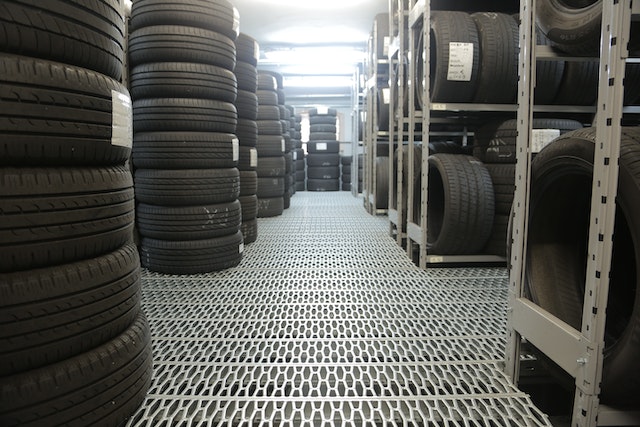
Imagine yourself driving down the highway, taking in the scenery and the freedom of the open road, when all of a sudden, you hear a loud thud. As soon as you know that you’ve just experienced a tire blowout, your heart sinks. You are suddenly compelled to stop on the side of the road, where you must deal with the inconvenience and difficulty of changing your tire or waiting for roadside help.
But what if there was a method to completely avoid this circumstance? What if there was a tire that could continue to function even after a blowout or puncture? Discover the world of run-flat tires, a ground-breaking innovation that is altering the way we think about tires and giving drivers more convenience and safety on the road.

We’ll go into the realm of run flat tires in this post and examine what they are, how they function, and the advantages they provide. Understanding the benefits of run-flat tires will help you make an informed choice and stay safe on the road, whether you’re an experienced or novice driver. So fasten your seatbelt and prepare to explore the world of run-flat tires!
What are Run-Flat Tires?
Run-flat tires are a unique kind of tire that are made to continue operating even after being punctured or damaged. Traditional tires are not intended to run flat because doing so could seriously harm the tire and jeopardize vehicle safety. A traditional tire that has been punctured or damaged may suddenly lose air pressure, deflate, and result in a ride that is jerky and unstable.
Run-flat tires, on the other hand, feature a special design and technology that allows them to be driven even after being punctured or damaged. Run-flat tires allow the driver to continue driving for a specific distance at a slower speed since they can sustain the weight of the vehicle and keep their form even with a total loss of air pressure.
Run-flat tires, which do not require a spare tire, can give drivers a greater sense of security and ease. Traditional spare tires can be large and cumbersome, taking up valuable space in the car’s trunk and adding weight that can reduce fuel efficiency. Run-flat tires enable drivers to enjoy a lighter car and extra trunk space for additional necessities.
Run-flat tires do have certain drawbacks, though, and it’s crucial to remember that they don’t completely replace conventional tires. Run-flat tires, for instance, may only be driven a certain distance and at a certain speed after being punctured, and they may not be repairable if they are seriously damaged.
How Do Run-Flat Tires Function?
Different technologies are used by run-flat tires to keep their integrity and carry on operating in the event of a puncture. These are the most popular techniques:
- Self-Supporting Run-Flat Tires
Self-supporting run-flat tires have sidewalls that are strengthened so they can carry the weight of the car even after the tire has lost air pressure. The tire’s strong sidewalls keep it from collapsing and give it the support it needs to keep rolling. After being ruptured, self-supporting run-flat tires can often be driven for up to 50 miles at speeds of up to 50 mph.
- Self-Sealing Run-Flat Tires
Self-sealing run-flat tires include an inner layer of sealant that can automatically close tiny punctures. The sealant usually consists of a viscous, sticky material that plugs the hole left by the puncture and keeps air from leaking out. After being punctured, self-sealing run-flat tires can only be driven a certain distance and at a certain speed.
- Auxiliary Supported Run-Flat Tires
Run-flat tires with auxiliary support combine self-supporting and self-sealing technologies. They contain a sealant that can patch up small punctures and have strengthened sidewalls that can sustain the weight of the vehicle. The inner support ring of the tire assumes control in the event of a major puncture and permits the driver to proceed for a short distance at a slower speed.
Run-Flat Tires’ Benefits
Run-flat tires have a number of benefits over regular tires. Here are a few examples:
Convenience: Run-flat tires free up room in the trunk and lighten the load on the vehicle by removing the need for drivers to carry a spare tire.
Safety: Run-flat tires let drivers keep going after a puncture to a safe place, lowering the possibility of accidents or other issues on the road.
Peace of mind: With run-flat tires, motorists may travel with assurance because they are prepared for a puncture or other tire-related emergency.
Conclusion
It’s time to think about if run-flat tires are the best option for you now that you are aware of their benefits and drawbacks. Run-flat tires can be a wonderful choice for you if you value convenience, safety, and peace of mind when driving. You have more trunk space and a lighter vehicle thanks to them because they provide additional protection and do away with the requirement for a spare tire.
It’s vital to keep in mind that run-flat tires may not work with all types of vehicles and have some restrictions on how far they may be driven and repaired. Before deciding to switch to run-flat tires, it’s important to think about your driving requirements and habits.
If you’re still unclear about whether run-flat tires are best for you, we advise speaking with a reputable tire expert who can guide you toward a choice based on the characteristics of your car and your driving style. They can also provide you advice on how to take care of your tires properly to extend their lifespan.
The most crucial thing is to put your safety on the road first, regardless of whether you choose to use run-flat tires or standard tires. You may have a pleasant and worry-free driving experience by being cautious and choosing knowledgeable tire decisions.